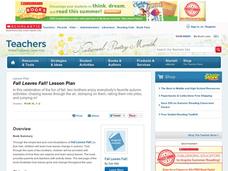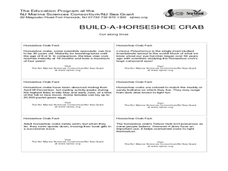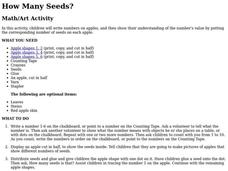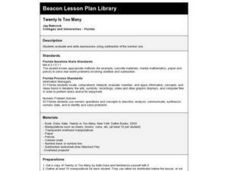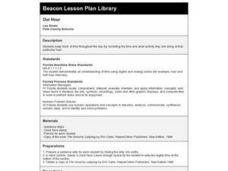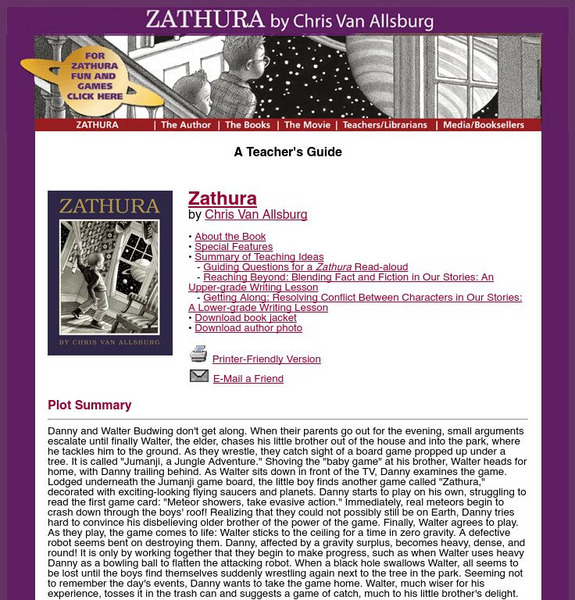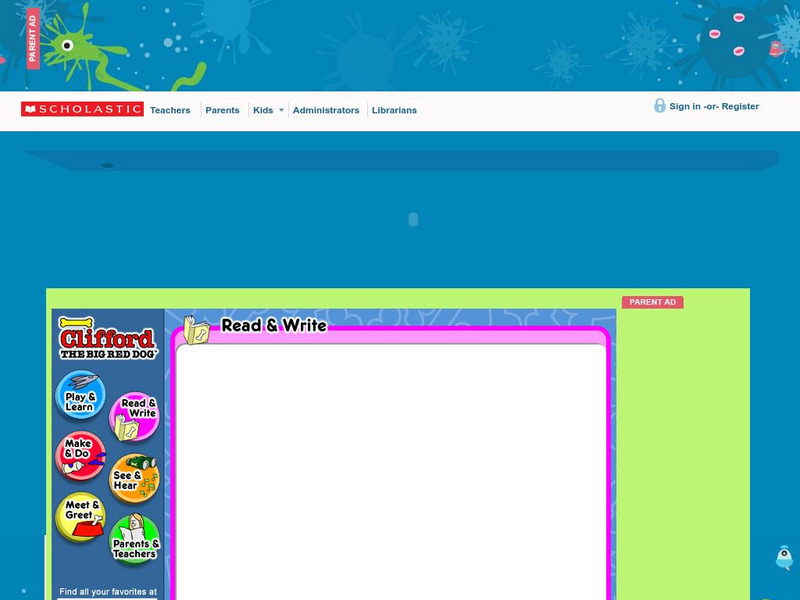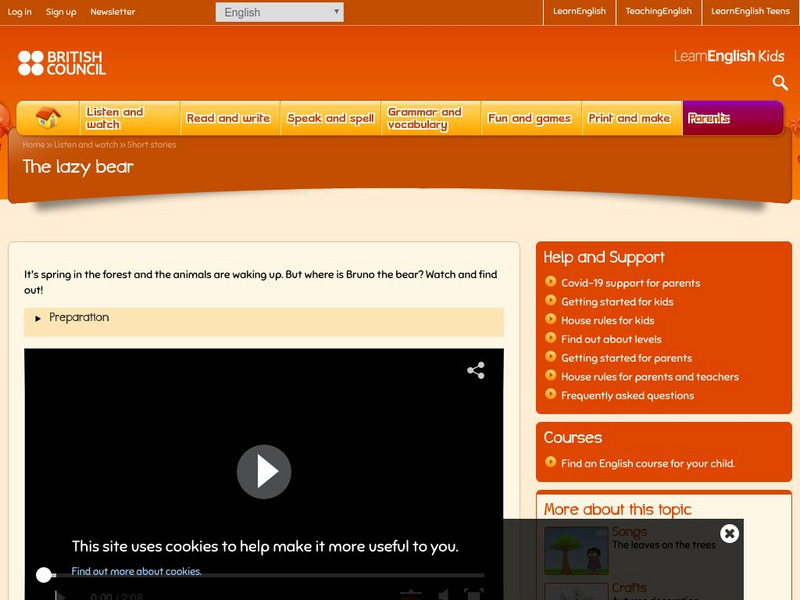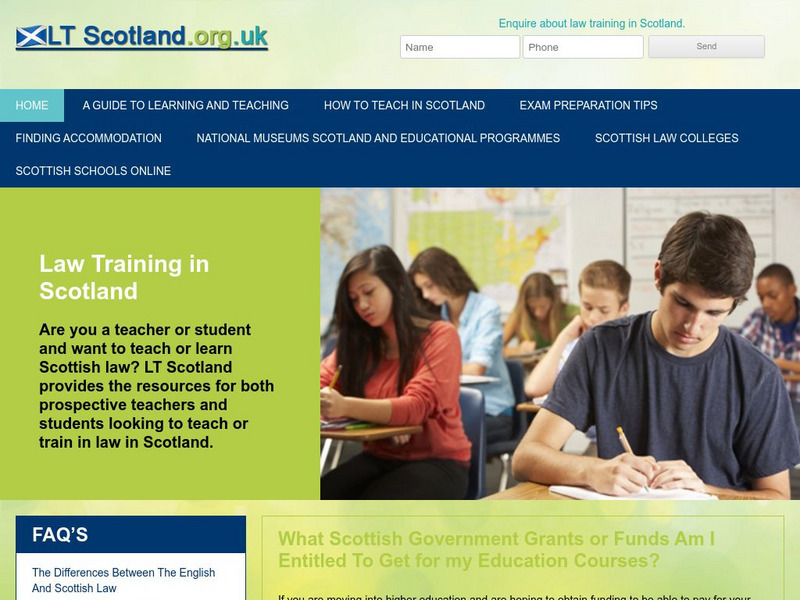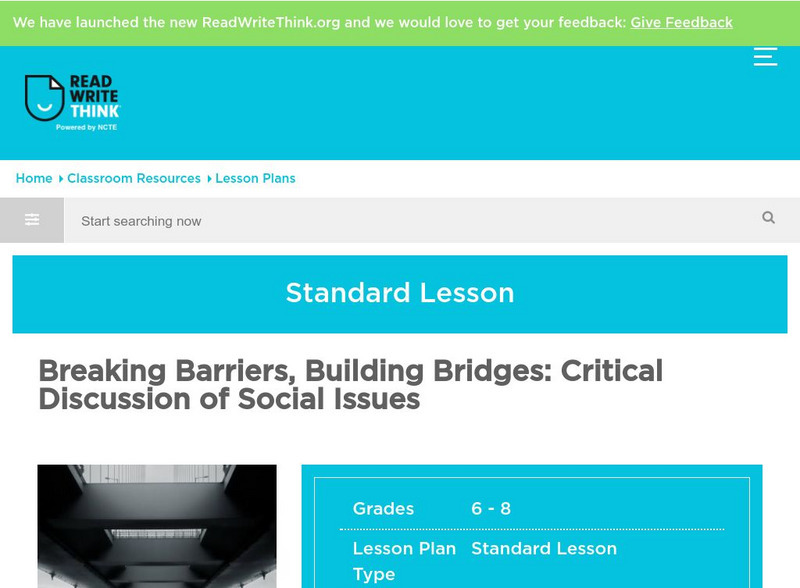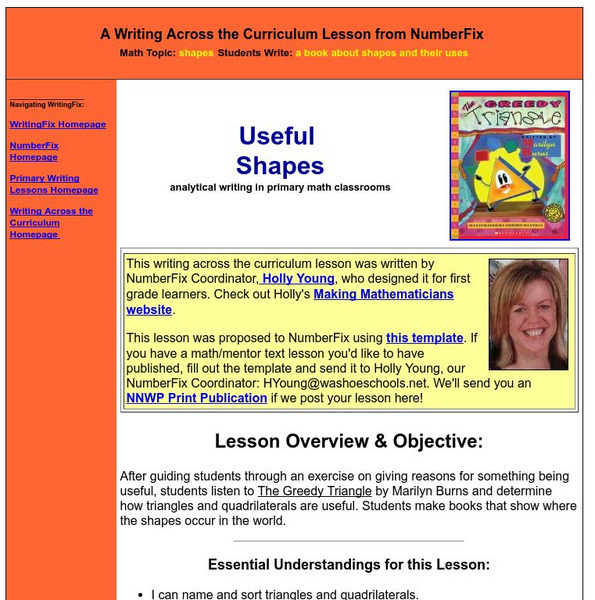Curated OER
Giving and Taking Directions
Learners identify the difference between commands and a declarative sentence. They complete a diagram with verbs, prepositions and numbers. They follow directions using a map and give directions to another location.
Curated OER
Giving and Taking Directions (Middle School)
Students describe the difference between a declarative sentence and a command. They complete a diagram verbs, prepositions and numbers. They follow directions on a map and create directions of their own to another location.
Curated OER
Fall Leaves Fall! Lesson Plan
Students discover facts about leaves. In this early childhood lesson plan, students identify different types of leaves, and make predictions about which types of leaves they think they will find in their community. Students collect...
Curated OER
On a Hunt for Simple Machines
Fifth graders identify six simple machines. They brainstorm types of machines and complete a KWL chart. Students observe and explain six simple machines found in the classroom and in their home. They share their list with the class.
Curated OER
Red Legs: A Drummer Boy of the Civil War
Students identify and interpret the life of a drummer boy during the Civil War as well as about a reenactment. Students listen to a fictionalized story or a Civil War reenactor and compare ot with the life of the drummer boy the story...
Curated OER
Symbols of America
Third graders choose an American symbol and write a poem about it. In this American symbols lesson plan, 3rd graders view and discuss the purpose of some American symbols and then write at least 5 lines in a poem about it.
Curated OER
Emotions: ACE English Program
Students respond to prompts about emotions. For this ESL/ELL lesson, students develop an understanding of vocabulary and feelings associated with emotions. They identify emotions on flashcards, in magazines, and on worksheets.
Curated OER
A Day in the Life of a Child in Accra, Ghana
Students create a list of similarities and differences between their lives and the life of a child in Ghana. They write what a typical day would be like if they lived in Ghana.
Curated OER
Build-A-Horseshoe Crab
Students discover many facts about horseshoe crabs. Students identify the main body parts of horseshoe crab. They explore the habits of the horseshoe crab and their importances to the ecosystem. Adaptations for younger students are...
Curated OER
Introducing George Washington
Students write down facts about George Washington. In this lesson on our first president, students listen to a story about George Washington and retell four facts about him.
Curated OER
Freckle Juice
Working in groups of four, the students will use the computer to draw an imaginary potion that will cure other children their age from physical traits (they can not control) including all ingredients and one text box.
Curated OER
Making Connections
Students draw connections between ideas and images that normally aren't put together, and combine a wide variety of words to form new images.
Curated OER
How Many Seeds?
Students write numbers on apple shapes, and then show their understanding of the number's value by putting the corresponding number of seeds on each apple.
Curated OER
A Day in the Life of a Child in Accra, Ghana
Students list similarities and differences about their lives in comparison to the life of a child living in Accra, Ghana today. Students share what they think about the life of a child in Accra, Ghana.
Curated OER
Our Hour
First graders keep track of time throughout the day by recording the time and what activity they are doing at that particular hour. They keep both analog and digital time.
Houghton Mifflin Harcourt
Houghton Mifflin Books: Zathura by Chris Van Allsburg
This comprehensive teacher's guide for the book "Zathura" by Chris Van Allsburg provides us with an opportunity to examine how writers blend scientific information with a fictional story.
Scholastic
Scholastic: Clifford: Read and Write: A Fish With a Wish
This is a picture book story about a fish and a lobster who both wish they had a friend.
Better Lesson
Better Lesson: Pictures and Text Work Together Too!
The class will read the informational text "Together They Were Better". As the teacher reads the book aloud, she/he will use the illustrations from each page to give young scholars clues as to the text on the page, helping them to see...
British Council
British Council: Learn English Kids: The Lazy Bear
Read along as you listen to an animated story about a bear who sleeps too long; then print words and some activities to do with the story.
Other
Lt Scotland: Storybook Web
Stories from Scotland! This website highlights a collection of children's stories by four famous Scottish authors. Play games, listen to read-alouds, complete a cloze activity, and listen to how the authors got the ideas for their stories.
ReadWriteThink
Read Write Think: Breaking Barriers: Critical Discussion of Social Issues
Through a series of picture book read-alouds and journal entries, students engage in critical discussion of complex issues of race, class, and gender.
Writing Fix
Writing Fix: Useful Shapes: Analytical Writing in Primary Math Classrooms
In this lesson, the book entitled The Greedy Triangle, written by Marilyn Burns, is shared. After sharing this read-aloud book, young scholars will illustrate pictures that incorporate the triangle. Then will write three reasons why a...
Writing Fix
Writing Fix: Truth Be Told
This lesson plan extends student understanding of the concept of "truisms" and "writing hooks" to introduce writings. Gretchen Bernabei's Reviving the Essay, the book Fox, written by Margaret Wild and Ron Brooks, will be read aloud and...




